Why does Google hate my health content?
Search engines are conspiring with the pharmaceutical industry to censor the internet and ensure that natural health information is hard to find.
At least, that’s the narrative dominating alternative medicine spaces following the armageddon caused by Google’s core algorithm updates beginning in March 2018. The infamous ‘Medic’ update in August of the same year resulted in sites like Dr. Axe and Mercola disappearing from the first page of search results almost entirely. Small publishers, in particular, have faced an uphill battle trying to recover and rank for the search terms they rely on to pull in traffic and succeed as businesses.
There’s certainly a pattern of huge organizations surviving these updates. But the theory that Google has a particular agenda quickly falls apart when we look at the bigger picture, and especially when we examine the data. Some sites that ticked every imaginable box for ‘mainstream medicine’ were punished. Many sites that were decimated in one core algorithm update made a full recovery in the next, and vice-versa. It might be appealing to picture the tech giant as a well-oiled and unstoppable machine. The truth is messier.
When wellbeing businesses hire the CanIRank Full Service team to help them recover from devastating Google Core updates, we often hear that their prior SEO agencies have advised them they have insufficient E-A-T: Expertise, Authority, and Trust. This concept originates in Google’s Search Quality Rating Guidelines, used by human quality evaluators to determine how well their algorithms are working. In other words, these guidelines describe what Google hopes to achieve and tell us precious little about how the algorithms themselves actually work.
As Googler Gary Ilyes put it at a recent PubCon Q&A, “EAT and YMYL are concepts introduced for Quality Raters to dumb down algorithm concepts. They are not ‘scores’ used by Google internally.“
As professional SEOs charged with helping clients understand and react to Google algorithms, shouldn’t we hold ourselves to a higher standard than simply repeating the “dumbed down algorithm concept”?
An SEO consultant explaining that Google wants to reward sites demonstrating E-A-T is a bit like a credit counselor saying “to improve your credit score, you should avoid defaulting on your debt,” rather than laying out specific actions to accomplish that objective.
These types of SEOs tend to overestimate search engines’ ability to implement their vision, and sometimes even suggest that the wellness industry should avoid discussing medical topics altogether. Your business might not provide medicine per se, but if you make a positive impact on your customers’ health, then talking about it is critical in growing your audience.
Another breed of SEOs promise explosive growth from the use of ‘black hat’ techniques that can ‘trick’ the algorithm, content quality, and expertise be damned. These methods often result in a total collapse in rankings once the algorithm detects suspicious activity. It can take time to recover from such a misstep.
There’s a more sensible approach: create high-quality content, earn genuine links, but also consider which signals Google uses in their algorithm to identify trustworthy sites and focus your efforts on maximizing those inputs rather than outputs. CanIRank’s competitive analysis software collects 549 data points on every URL we analyze, which gives us an inside look at the factors being rewarded in each algorithm change. After the August 2018 Core Algorithm update, we were able to pinpoint specific issues associated with ranking drops when other SEOs were selling their clients “increase your E-A-T.”
One large health site was able to completely recover from the Google Medic Update by following our advice to tweak one small WordPress setting:
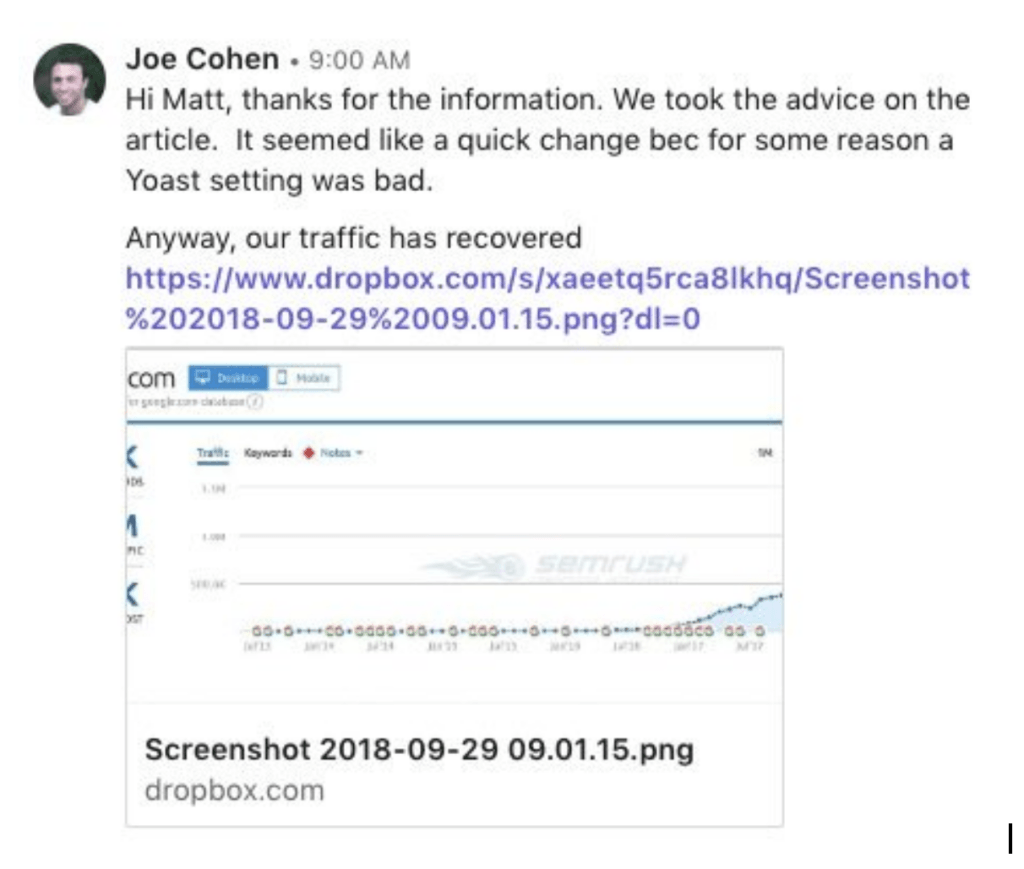
This article will draw upon the CanIRank Full Service team’s experience helping clients in the health and wellness industry recover from Google Core Updates, and recommend specific actions to safely and effectively climb the search engine results pages by producing high quality, technically optimized health content.
By following these nine rules, you can maximize your chances of averting Google’s punitive gaze, while delighting and informing your community and building a sustainable online presence that supports your growth.
Nine steps to recovery
1. Start off on the right foot with the law
If you’re working in a field with shifting regulations – like making cannabis products – consider consulting a legal professional.
Many public agencies publish simplified legal guidelines online, and even if your industry regulations are less complex, it’s worth researching the regulations relevant to your business.. In the USA, for example, any product classified as a ‘drug’, a ‘supplement’, a ‘cosmetic’ or a ‘food’ is regulated by the FDA, with different rules for each. Companies are only allowed to claim that their products treat diseases if the FDA recognizes them as drugs.
When regulations change, review your content and make any necessary updates. Google also prefers new content, so you can help maintain your rankings by refreshing it regularly as well.
Besides keeping you out of legal hot water, taking official regulations seriously is a strong foundation to get your SEO right and give your customers confidence in your brand.

2. Engage with scientific literature
I once heard Tina Packer declare to a roomful of trauma specialists: “Therapy and theater are intuition at work. They are the opposite of research, where one strives to step outside of one’s own personal experience, even outside your patients’ experience, to test the objective validity of assumptions. What makes therapy effective is deep, subjective resonance and that deep sense of truth and veracity that lives in the body.” I am still hoping that someday we will prove Tina wrong and combine the rigor of scientific methods with the power of embodied intuition.
– Dr. Bessel Van Der Kolk, ‘The Body Keeps the Score’
It’s essential to remember there’s always more research being done.
In science, few things are firmly established as fact. For every question with a consensus, there are hundreds more where the jury is out. Medicine is no exception.
You’ll probably come across studies that don’t tell exciting stories about your discipline. You might feel disheartened – even defiant – in the face of such research, but it’s a good idea to put things into perspective. A scientific study is an attempt to answer a specific question. Of course, we want to hear that a treatment is more beneficial than we’d ever dared dream. But sometimes we’ll learn that for a certain group of people, in certain circumstances, the intervention isn’t what we hoped. Keep an open heart. The evidence might teach us something about the mechanisms of healing and make us even better at helping each other.
Case Study
Google is not omnipotent.
A publisher of a health blog was struggling to rank on search pages and asked CanIRank to help. An audit of their site content revealed they’d broken up posts into multiple pages. They generate revenue through advertising and hoped that more pages would mean more ad impressions. Unfortunately, this meant that the word count of each page was low. Google’s algorithm takes this ‘thin content’ as a negative signal for site authority, and demands high authority for health content, making ranking extremely difficult. There was no intentional foul play by Google or by the publisher – it was simply a matter of peeking under the hood of the machine and identifying the mathematical problem. Today their business is thriving. At the time of writing, they appear on the first page for searches like “homemade high fiber cereal” and “carrot vs. broccoli.”
You might also find a study or two suggesting amazing implications for your work. Again, it’s tempting to react with joy, but nothing is really proven. There’s just the loose suggestion that for some people, coming to you for help could make all the difference.
Build trust with your community by sharing whatever you learn – good news or bad.
Google prefers long, in-depth content. Taking the time to research and write quality, detailed posts is worth the investment. Quote directly from the scientific literature, be precise about what the research says, and include links so your readers can learn more. If you’re short of resources, it might be worth using professional writers.
First and foremost, establish yourself as someone firmly on the side of truth, even when it lengthens your customers’ buying journey. You’ll set yourself apart from the crowd and build a reputation that will outlive generations of health gossip and marketing fads. Secondly, think about how to signpost your intentions so even robots can understand what you’re up to. Sometimes that’s as simple as writing longer content.

3. Be accountable
It’s easy to be invisible online and spread unverifiable ‘facts’. People are justifiably worried about false information, and there’s a risk of a race to the bottom in terms of transparency and integrity.
To demonstrate your genuine intentions, let your readers put a face and a name to your content. If you tell your community who you are, where you can be found or contacted, and what gives you the legitimacy to weigh in, you make yourself accountable.
Case Study
A personal trainer was growing his profile online but suffered a series of dramatic rankings drops after Google’s 2019 Core Updates . CanIRank peeked behind the curtain and found issues like multiple ‘H1’ tags on certain pages (Google uses these to ‘name’ the page and expects to find only one). Another factor was that the author’s bio was too sparse. Among other optimizations, CanIRank added a list of credentials to the homepage, built a short profile into each blog post, and expanded the ‘about me’ page. At the time of writing, the site pulls in great, high-converting traffic thanks to its appearance on the first page for more than 500 niche searches, from “lift heavy to burn fat” to “protect yourself from roundup”
However, brands risk disaster if they rely on the authority of a big personality making contentious health claims. Even if your star has an impressive scientific background, people are waking up to the fact that science is not about celebrity. It’s a collective effort, and humility goes a long way. This is one telltale sign that humans are quickly becoming adept at spotting. Machines are likely to follow.
It’s widely understood that backlinks (ie: other websites linking to you) are valuable SEO signals. Less talked about, but still important is your own profile of outbound links (ie: the sites you link to). Back up your claims by linking to trusted authorities like the FDA or NHS.
Gone are the days when ambiguous or exaggerated medical credentials could win the trust of customers. Authenticity cuts through the noise online. So be yourself, be available, participate in an open dialogue, and if you make a mistake or change your mind about something you’ve written – say so.

4. Underpromise and overdeliver
The most important take-home message with diet and health is that anyone who ever expresses anything with certainty is basically wrong
– Ben Goldacre, Bad Science
So you have a dozen customers who are convinced that your treatment saved their life, cured them of a painful and debilitating disease, and taught them to love again. Of course, you’re excited. This is why you’re in the wellbeing business!
But these anecdotes are not scientific evidence. On the internet, there’s no limit to the potential size of your audience. If you want to rank on the first page of search results, you have a moral obligation to be cautious about the advice you give. Set realistic expectations for your customers rather than selling a best-case scenario.
The human body is an intricate system. Sometimes a massage or a better night’s sleep is what it needs to get everything back on track. Other times, it’s important to speak to a medical professional.
Search engines pay attention to ‘query intent.’ A search like ‘colon cancer symptoms’ deserves serious results with exceptionally high expertise, authority, and trustworthiness. Trying to compete for queries like these can be a waste of time for natural health and wellness practitioners, and perhaps even sets off some algorithmic red flags. If your site presents a viewpoint based on intuition or tradition, you’ll have more luck targeting keywords where the query intent doesn’t demand scientific rigor.

5. Health isn’t just chemical processes. Remind your audience that feeling good is an essential part of being well!
Mainstream medicine agrees that lifestyle factors like exercise, alcohol consumption and stress are critical to life expectancy. There’s no drug or therapy in the world that can substitute for consistently treating the body with respect.
Besides living longer, wellness is also about making the most out of life. Science has known about the link between physical and mental health for decades, and the research keeps piling up. This is precisely where natural health practitioners can make the biggest difference. Whether it’s reinforcing the body’s healing mechanisms by furnishing it with the right vitamins or helping people reconnect with their bodies, improving your customers’ subjective sense of wellbeing will get doctors around the world singing your praises.
From an SEO perspective, ‘lifestyle’ websites have more elbow room than ‘health’ sites. If the goal of your business is to help your customers live their best life, make sure your content signposts that fact for search engines.
Perhaps your practice has mechanisms that directly treat diseases. Perhaps not. It’s science’s job to investigate those possibilities and empower doctors to make recommendations based on what’s likely to help their patients get better. Instead of offering a cure that might never materialize, you can offer something definitive – the opportunity to experience joyful relaxation or invigoration.

6. Don’t be afraid
Keep in mind that your customer’s doctor wants the same outcome as you.
Businesses setting themselves up in opposition to mainstream medicine can be certain of cultivating a particular feeling in their audience: paranoia. If the story we tell is one of suspicion – one in which respected professionals do not have the community’s best interests at heart – we risk contributing to illness and isolation.
Doctors sometimes do dismiss ideas as nonsense, or even dangerous. It’s important to note that they do this to protect their patients. They’re all too familiar with the history of false information distracting from treatments that work, compromising public health, and in some cases causing death.
That doesn’t mean doctors are always right. Nor are organizations that collate medical information. Public bodies like the WHO are responsible for millions of people; it shouldn’t be a surprise that they’re very cautious about new ideas and are often slow beasts to turn.
Even amongst doctors with years of experience behind them, there are intense debates about what effective treatment looks like. Most doctors hold at least a few minority opinions. Many of these dissenting ideas are eventually absorbed into the mainstream. What gives these professionals legitimacy to challenge the status quo is that they are held directly accountable by their peers and institutions. Their hard-earned right to practice is at stake, forcing them to engage with the latest research, and with experts who disagree with them.
A big part of SEO is building relationships. The internet is a very large, complex network-of-networks – much like human society. Every link between websites is a connection between people and their ideas; it’s also a path users can take to explore and learn. Build a solid social following. Follow doctors and engage in discussions on other channels. It’s hard to say exactly what kind of behaviors search engines reward, but we do know that Google looks at some off-site signals to determine authority and expertise.
Health is not a closed discussion. Anyone can participate, but it’s appropriate to acknowledge the limits of one’s own authority. Be mindful of the difference between science – which relies on large data sets and rigorous methods like double-blind studies – and anecdote or intuition. Serious researchers talk about ‘findings’ – to call something a ‘fact’ implies a degree of certainty that demands enormous evidence.
Be clear. Be confident. But above all, be genuine in acknowledging what you think you know and what you know you don’t.

7. Disavow quackery
Is there an influential figure, who uses their platform to cause a stir and promote unconventional treatments and ideas, who happens to think that your discipline is capable of miraculous healing?
Your heart might scream that this person offers an irresistible opportunity to grow your business and help more people than ever. If you want to build enduring respect with your community, you must defy that urge. Being associated, even vaguely, with the anti-vaccination movement or celebrity ‘experts’ with exaggerated or fabricated credentials can undermine confidence in your brand. It could well even trigger brutal penalties from search engines.
Case Study
Reaching out to other organizations and experts to collaborate and build links doesn’t have to be dangerous. One group of dieticians promoting a nutrition-based approach to healthy living was performing well with their Google rankings until a notorious ‘core algorithm update’ hit. CanIRank investigated, and sure enough, there were a few backlinks that needed to be disavowed. But this wasn’t the key factor in recovering the site. The real story was more technical: a huge number of their pages had thin content (fewer than 500 words), and they were all being indexed. Site speed was also an issue compared to their ranking competitors. The same website had a host of successful collaborations with other sites, and the links helped them with their SEO efforts. Link building is a totally fine way to ascend the rankings, and while you should avoid ‘spammy’ backlinks, technical factors are important too. At the time of writing, that same organization ranks on the first page for important keywords like “low fodmap snacks” and “serovital ingredients”
Google is keen to bring order to a health internet that has traditionally been the wild west of the web. You do not want to be swept up in the carnage.
A big part of SEO best practice is to keep a pulse on your backlink profile, making sure it’s natural and not dominated by links from one or two domains. Links to and from disreputable websites are red flags. If you’ve already fallen victim to this trap, it’s not too late: your first step is to remove bad links from your own site and reach out to the webmasters of any shifty sites that link to you, requesting to have the links removed. Failing that, you can formally disavow backlinks using Google’s Disavow Tool. You might want to consult an SEO expert who can help repair the damage and rebuild your online reputation.
Partnering with other sites is a great way to improve your rank, and gives your customers access to more resources. The key principle to keep in mind is that links should be natural and appropriate, and come from a variety of reputable pages.

8. Do talk about the history and culture of your field. Don’t call it evidence.
Exercises like meditation and plants like Camellia sinensis (Tea) are inseparable from their romantic lore. History is replete with human attempts to be healthy through ritual. Immersing oneself in these traditions can offer a profoundly rewarding experience, to say nothing of the importance of paying respect to the cultures from which they originated.
Our wellness practices become more meaningful and personal when we learn about their roots. It makes perfect sense that businesses serving as a gateway into these worlds should also play a role in teaching their histories, or at least connecting students to resources where they can learn more.
By exploring how previous generations responded to sickness and pain, your community might gain some wisdom about their own circumstances. A shift in attitude, a surge of creativity or a renewed optimism in the power of mind over matter can make the difference between deterioration and recovery. Teaching these traditions can also add gravitas to your brand, keep visitors on your site for longer, and give search engines those all-important subtle algorithmic clues to what your business is all about.
But no matter how ancient these practices, how beautiful their stories, how logical the explanations – spiritual or physical – for how the human body can be rejuvenated, they cannot compete with science. There is no substitute for the rigor and precision of modern medicine. The fact that humans have done something for hundreds or thousands of years offers no tangible proof that they really work compared to controlled, repeated studies. Belief is a powerful thing. Wielded responsibly, it truly can help people get well. Left to run riot, it gets in the way of search for truth.

9. Understand that the layout and user experience of your website tells its own story
When we decide whether to trust a person, we pay attention to how they communicate. The words they use play a big part in shaping our initial feelings, but we notice other details as well; their tone of voice, their facial expressions, their body language.
Humans start to learn how to interpret these subtle cues as children, as they start navigating the complex world of relationships. Anyone who wants to be a trusted advisor to a community of people has to learn to express themselves openly and build those relationships patiently and naturally.
The internet is a comparatively young mode of communication, but it is coming of age. Kids today are growing up as true ‘digital natives’ and the relationship between being human and being online is studied as an academic discipline. As early as 1985 – years before the arrival of smartphones or social media – scholars were theorizing that we’re already cyborgs.
Case Study
A popular blog for new and expectant mothers with a focus on natural methods and products was struggling with their search rankings. CanIRank identified many pages in the architecture of their site that weren’t accessible to users at all. Some pages had dense ads that resulted in no content at all ‘above the fold’ (ie: visible to users without scrolling). Google’s algorithm picked these up as red flags for credibility. CanIRank worked to eliminate these issues and expand the site’s information architecture. At the time of writing the site now ranks on the first page for some highly competitive search terms, like “reverse due date calculator”!
So it’s not a big stretch to say that your website has its own mannerisms and body language. Just like your behavior in life, your website can reveal your secrets. It can tell observant visitors – both human and machine – about how you do business. If there are intrusive or ominous ads on your site, information is hard to find or the overall experience is confusing, you can expect to scare away much of your audience from the word go.
It’s not just customers paying attention to the way you present yourself online. Search engines are more intelligent than ever in assigning trust based on whether a website looks helpful or predatory. Do you have ads on your site that could be seen as deceptive? Could they be confused with your own health content? Are they overtaking your information? Professional SEOs have many conflicting theories about how Google determines what a good website looks like, but we do know that bounce rate (ie: the number of people that leave your site within moments of arriving) can affect search rankings. Create a site that’s worth visiting and engaging with.
Sites that aren’t mobile-friendly have a 0% chance of ranking well. Make sure that your site looks great on a mobile platform.
Much of this is intuitive, but for larger websites, there are complicated factors that must be kept under control. Even established sites like Examine.com, which is presented cleanly and on paper ticks all of Google’s boxes can fall prey to algorithm updates largely because they didn’t have their technical SEO under control.
Conclusions
To succeed online as a natural health or wellbeing business, you need to take content quality seriously. When you write for humans, that can be as simple as working hard and having the right intentions. Following the rules in this article is a great way to make sure you nail it the first time.
But modern marketers need to write not only for humans but for machines too. How do we go about telling Google’s robots that our content is honest and credible?
When you dive into the SEO industry chatter, you’re likely to hear from three main groups.
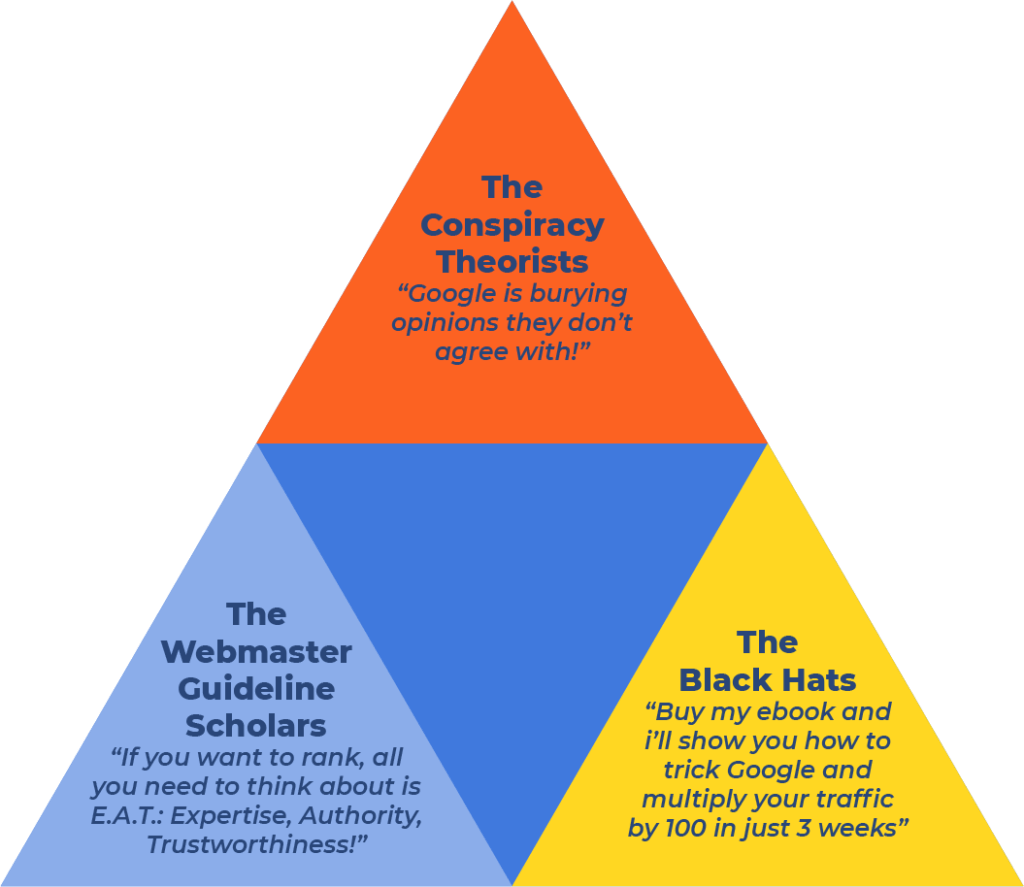
But if you ignore all of this advice and instead look at the data, a different picture emerges. Google is a complex set of computer algorithms. It’s unlikely they would risk their entire business by tweaking those to benefit pharmaceutical companies (or any other advertiser). But it’s also naïve to think Google’s algorithms can accurately assess high-level concepts like “expertise.”
Machines can’t tell the “accuracy” of content. Our systems rely instead on signals we find align with relevancy of topic and authority. See: https://t.co/O65v1PTehr and https://t.co/cTveD8XNxp
— Danny Sullivan (@dannysullivan) September 9, 2019
Google’s understanding of quality, authority, and trustworthiness is not perfect. They’ve rewarded sites with powerful brands that doctors probably wouldn’t consider particularly scientific, like goop.com and menshealth.com. But they are turning up the dial on credibility. For many companies, there’s a transition point: being scientific and accountable is a solid foundation, but you can still get caught in the crossfire when the machine comes looking for spam. To avoid being penalized, businesses need to identify the quantitative signals they’re not satisfying.
Most websites that lost traffic in a Google Core Update exhibited multiple issues, including topical relevancy, link profile and technical SEO. Since there is no single “smoking gun” with Core Updates, we developed a 6-part Core Update Audit to help identify and prioritize the likely culprit in each unique situation.
Some issues are easier to fix than others. But in all cases, we are looking for specific, tangible signals that can be assessed by a computer (such as Google’s crawlers), and remedied by the work of a smart SEO team.
Core Update recoveries often follow a pattern similar to this client:
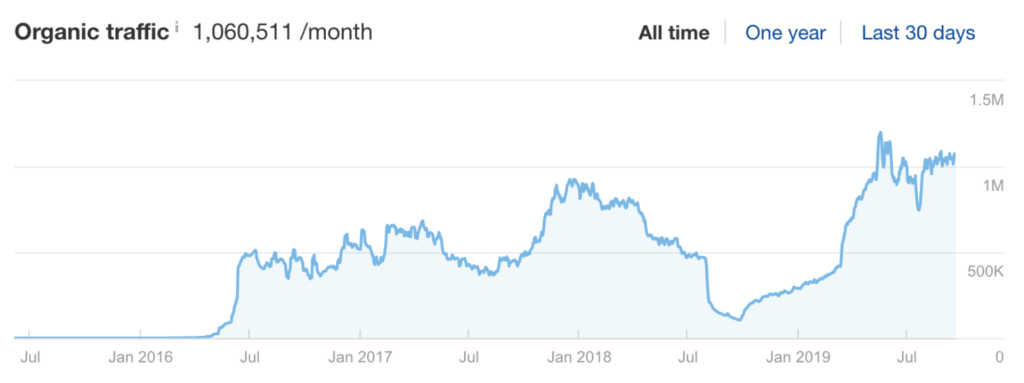
- Impact: Core Algorithm Update leads to a site-wide drop of 40-80% of traffic within a week or so of the update
- Deterioration: barring corrective action, rankings often continue to erode at a slower pace in the ensuing weeks
- Turnaround: as improvements are put in place, we make slow gains on a page-by-page basis, but are usually still way below prior baseline
- Recovery: if the client stays the course and the sitewide issues are resolved, full recovery usually occurs in a subsequent Core Update
If you’re looking for more specific action recommendations and a team of experts on-demand, CanIRank can help. For marketers willing to embrace the complexity and dive into making their website and content better in specific ways that both humans and machines can appreciate, there are huge victories to be won.
Take a look at our case studies to learn more, or go ahead and schedule a consultation with us to start the discussion about your wellbeing business right away.
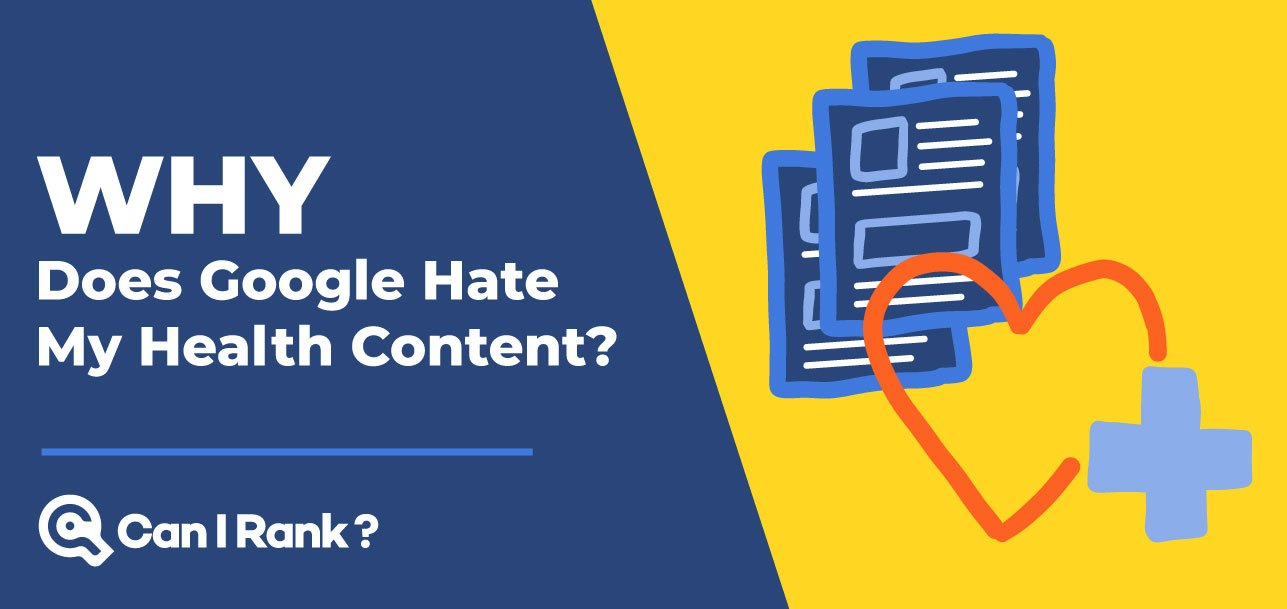


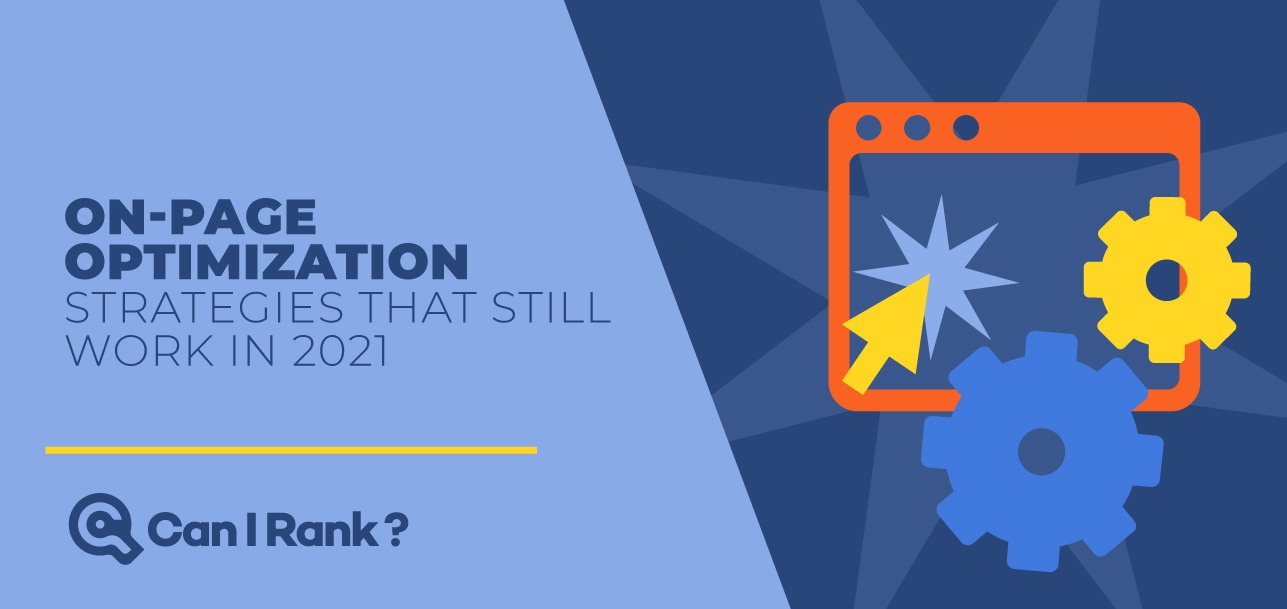
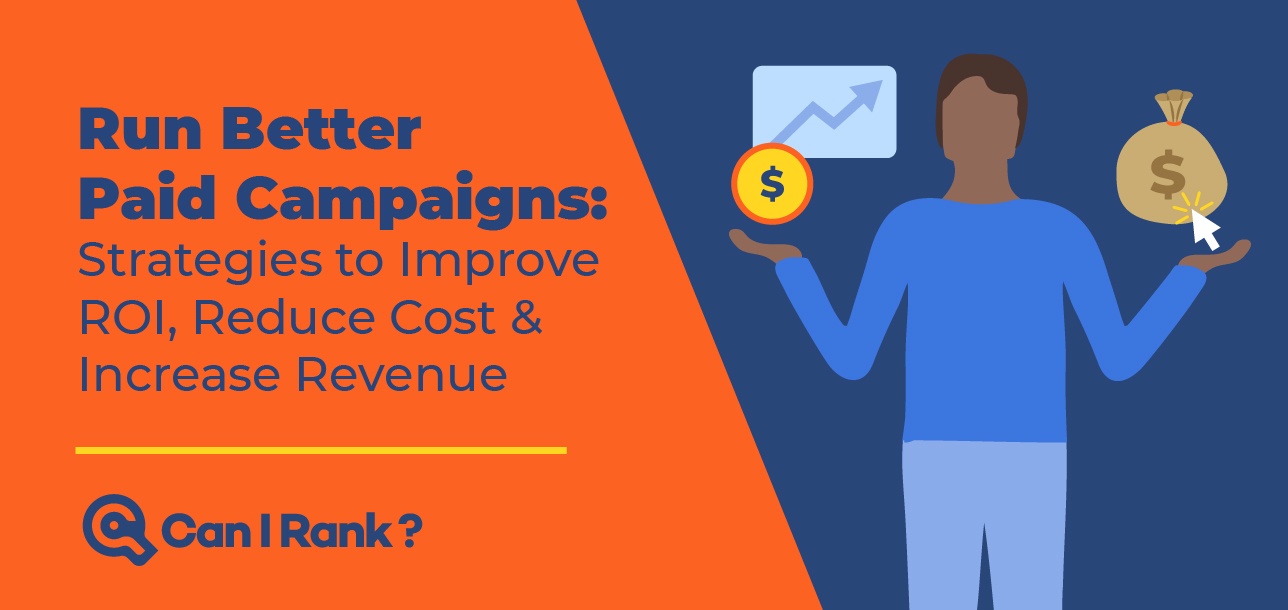
Thank you for useful information!